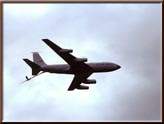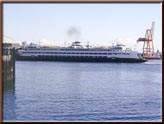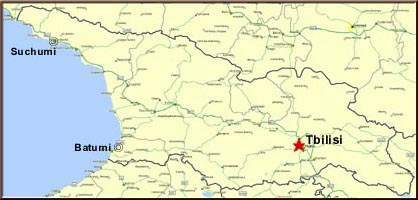 AIR: AIR:
International carriers serve by Central Airport in Tbilisi, 18km (11 miles) east of city
center. Taxis and buses run into town. Domestic departure points are located in Tbilisi,
Kutaisi, Batumi and Senaki. Helicopters are also used for some mountainous regions.RAILWAY:
Georgia has 1600km (987 miles) of railway. Georgia has railway connections with
Azerbaijan, Armenia (with the line continuing into eastern Turkey) and Iran. The Transcaucasian railway main line connects two railway branches - from Baku
(Azerbaijan) and from Yerevan (Armenia) on the Georgian territory. The main line stretches
in the direction of Russia through the territory of Georgia, along the Black Sea coast
line. Currently the line is blocked due to the conflict in Abkhazia and mainly servers
domestic purposes, i.e. the transportation of cargo within the country territory as well
as from the Batumi port to different parts of Georgia and other Caucasian countries.
 SEA: SEA:
Three large ports (Batumi, Poti, Sukhumi) are located on the Black Sea coast of Georgia.
Batumi and Poti are the points of departure for cargo ships leaving occasionally for
Odessa, Sochi, Trabzon and Istanbul.
Ships from all over the world arrive at the above ports. The Trans-shipment points for the
ships are Genoa and Piraeus.
Batumi continues to provide international connections with the Black Sea and Mediterranean
ports.
 HIGHWAYS: HIGHWAYS:
Georgia has approximately 20,000 km (12,428 miles) of asphalted roads, and there is an
ambitious project to construct a motorway connecting the Black Sea ports to the border
with Azerbaijan, passing through Tbilisi. Four main highways radiate from Tbilisi, roughly
in the cardinal directions, to Russia, Azerbaijan, Armenia, and Black Sea. Buses
regularly run from Tbilisi to regional centers in Georgia as well as to Armenia,
Azerbaijan, Russia and Turkey.
TOWN TRANSPORT:
Buses and mini-buses run in regional centers, towns and in the capital. Large cities are
served by public transport (buses, trolley-buses). In addition, the capital is served by
underground transit. The handiest means of transport is a taxi. Taxis are mainly privately
owned cars but public taxis are also available, for which special stations are being set
up and reconstructed.

|